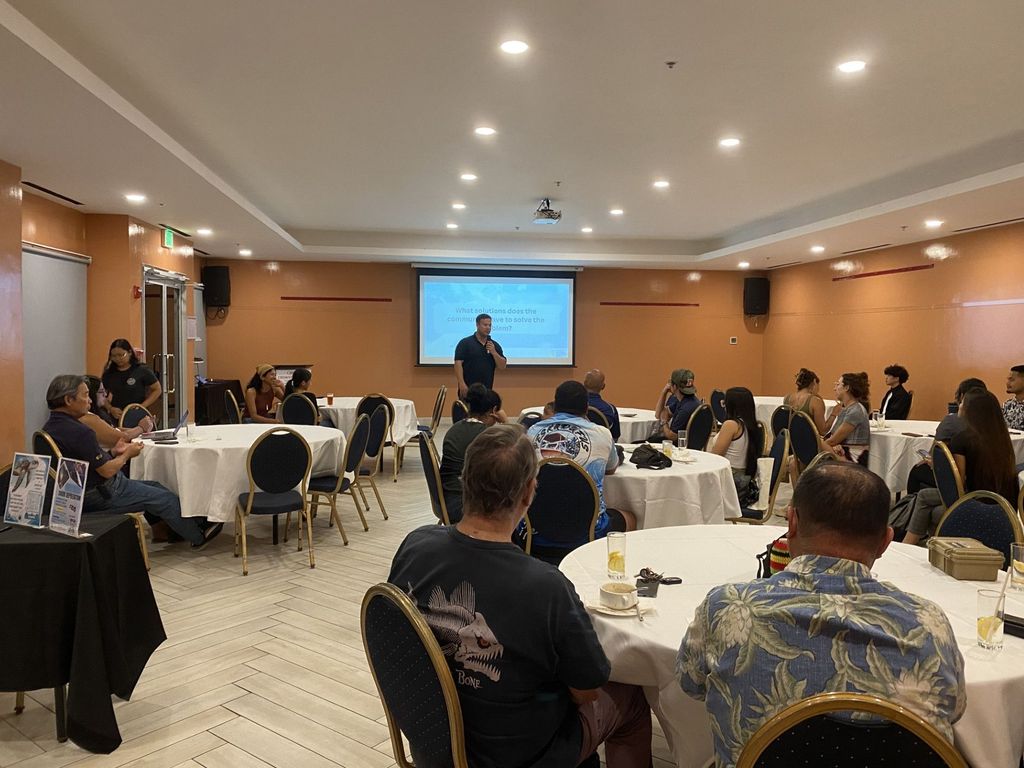By Andrew Roberto
andrew@mvariety.com
Variety News Staff
FISHERMEN’S shark tales of frustration over predation and concerns about its impact on fisheries dominated the discussions at a public meeting hosted by the nonprofit organization Pacific Islands Fisheries Group to discuss the effects sharks have on their catch.
According to a slide presented during the meeting held at Crowne Plaza on Monday, shark bycatch in American Samoa, Guam, Hawaii, and the CNMI occurs but is “not assessed or largely understood.” Anecdotes from the region suggest that shark predation on fishermen’s catch, as well as shark bycatch, is increasing, PIFG said.
The meeting brought together over a dozen local stakeholders to share their perspectives and experiences with shark predation.
Local fisherman Vince Tudela described his frustration:
“You’re out there trying to be successful in your catch, and you already have the anticipation of going out with the right gear and everything else in place … only to have a bunch of sharks discover your setup,” he said.
Tudela recounted motoring far past the reef to drop a bottom fishing rig, only for four sharks to depredate it.
“I tried to see if they would leave my hooks alone, but they broke one rig off. I moved to Angingan toward Coral Ocean Point, and as soon as I stopped the boat, the sharks were next to me. I figured I wasn’t fishing that day,” he said.
Gene Weaver, co-founder of Tasi-To-Table, said local sharks frequently bite yellowfin tuna caught on fishing lines. This was corroborated by fishermen James Roberto and Tudela.
Mike Tenorio elaborated:
“When they’re feeding on the tuna in a feeding frenzy, they become very aggressive. If you’re in the water and shoot a fish with sharks nearby, they can become territorial. When you see them flexing and showing their teeth, that’s a sign to step back and leave the area,” he said.
Alex Min, a PIFG program coordinator, said the nonprofit has presented shark culling as one possible action to the Western Pacific Regional Fishery Management Council, which oversees Guam, the CNMI, American Samoa, and Hawaii.
“It’s not the only solution, and not always welcome, but we need balance. There are many shark laws across the region, and if the fishing community is losing nine out of 10 fish, it indicates a serious ecosystem imbalance,” Min said.
He cited Public Law 15-124, which makes it illegal to kill rays and sharks in the CNMI. Under the law, it is unlawful to possess any shark, dead or alive. Hawaii and American Samoa have similar bans.
However, federal regulations allow fishermen to land sharks whole, provided they do not engage in shark finning, which is cutting off fins and discarding the rest of the shark.
John Gurley, founder of Micronesian Environmental Services, suggested ways to quantify shark impacts on fisheries.
“We can measure losses economically, by tracking money lost in gear, and account for total poundage of fish lost,” he said. Gurley also suggested assessing whether local regulations conflict with federal laws. He recommended developing a market for local shark meat.
“I think shark meat could be a high-end product for restaurants in the Marianas. It’s good eating,” he said.
Tudela said he is “split” on the issue:
“If there’s a real problem, we have to decide what controls to implement. There’s a thin line between pro-shark and anti-shark. Out on the water, it’s predator versus predator — we both need to eat. But being from here, we must respect their world. They live around our waters, but we live with them. If their numbers exceed ours, how do we manage that?”
He said he would support population control through fishing derbies or other measures but does not favor total eradication of the species.











